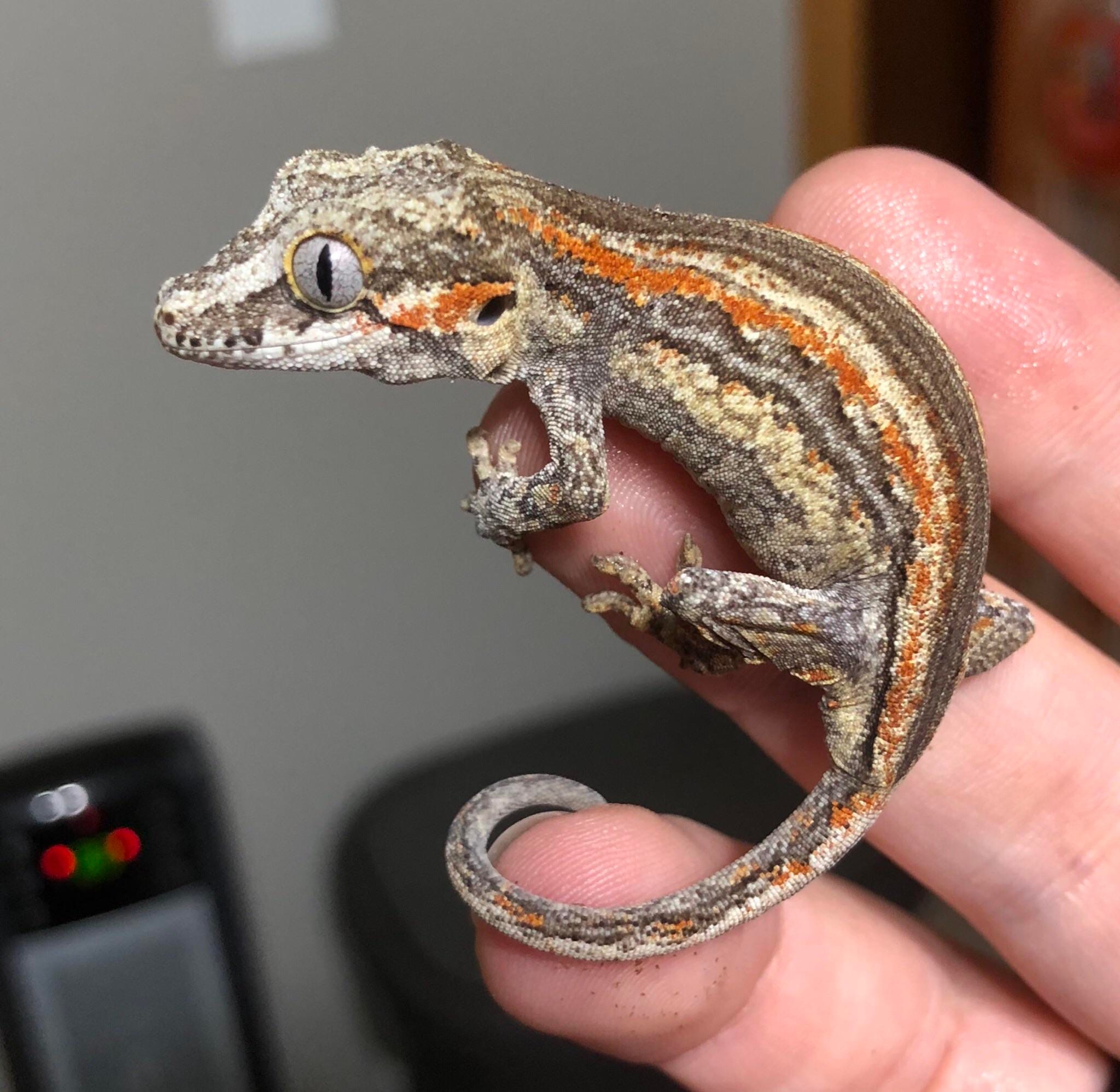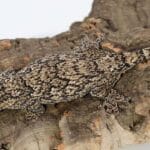Ever seen a gecko that looks like it has a little gargoyle head? That’s a gargoyle gecko! These captivating lizards, native to New Caledonia, are increasingly popular pets due to their laid-back personalities and stunning array of colors. But caring for them requires more than a casual approach. This comprehensive guide covers everything from setting up their ideal habitat to understanding their dietary needs, ensuring your gargoyle gecko thrives under your care. Whether you’re a seasoned reptile keeper or just starting out, this guide will equip you with the knowledge to provide a happy and healthy life for these fascinating creatures.
Understanding Your Gargoyle Gecko
Gargoyle geckos (Rhacodactylus auriculatus) hail from the lush rainforests of New Caledonia and can live for an impressive 15-20 years with proper care. Their namesake horn-like bumps above their eyes, coupled with expressive eyes and textured skin, give them a distinctly prehistoric, dragon-like charm. These geckos come in a breathtaking variety of colors and patterns, known as “morphs,” ranging from vibrant reds and oranges to subtle grays and browns, each making them a unique and captivating companion.
Creating the Ideal Habitat
Replicating the natural environment of your gargoyle gecko is key to their well-being. A tall terrarium is essential, as these geckos are arboreal and love to climb. A bioactive terrarium, which creates a self-cleaning ecosystem with live plants and microfauna, is highly recommended. This setup includes a layered substrate with a drainage layer, barrier, substrate layer, leaf litter, and carefully selected plants. Climbing branches, cork bark, and other vertical elements are crucial, providing opportunities for exercise and exploration. Multiple hiding spots, such as hollow logs or artificial caves, offer security and reduce stress.
Nourishing Your Gecko
Gargoyle geckos are omnivores with a penchant for sweet flavors. A commercially available crested gecko diet forms the staple of their diet. Supplement this with protein-rich insects like crickets and dubia roaches, offering variety and ensuring balanced nutrition. Calcium and vitamin D3 supplements are crucial, especially for juveniles and gravid females, to prevent metabolic bone disease. Dusting insects with these supplements ensures proper intake and promotes strong bones and vibrant coloration.
Handling with Care
While gargoyle geckos can be handled, it’s essential to approach them with gentleness and respect. Approach slowly and support their entire body, avoiding sudden movements. Never grab their tail, as they may drop it as a defense mechanism – a stressful experience for the gecko, even though the tail will eventually regenerate. Regular, gentle handling can help your gecko acclimate to your presence and build trust over time.
Maintaining Gecko Health
Like any pet, gargoyle geckos are susceptible to health issues. Common ailments include metabolic bone disease, parasites, and respiratory infections. Regular check-ups with a reptile veterinarian are crucial for preventative care and early detection of potential problems. Maintaining optimal humidity and temperature within the enclosure is essential for preventing respiratory issues. Quarantine any new geckos before introducing them to an established group to prevent the spread of disease.
Breeding Gargoyle Geckos
Breeding gargoyle geckos requires careful planning and preparation. Females typically lay two eggs per clutch, multiple times a year. These eggs require specific temperature and humidity levels for successful incubation, often best achieved with an incubator. Hatchlings, or baby geckos, have specific dietary and environmental needs, growing rapidly and requiring close monitoring during their early stages.
Bioactive Terrariums: A Deeper Dive
A bioactive terrarium provides a more natural and self-sustaining environment for your gargoyle gecko. The layered approach creates a miniature ecosystem:
| Layer | Function | Materials |
|---|---|---|
| Drainage Layer | Prevents waterlogging | Clay balls, gravel |
| Barrier | Separates substrate and drainage | Landscape fabric, mesh |
| Substrate Layer | Base for planting and burrowing | Coconut fiber, sphagnum moss, topsoil mix |
| Leaf Litter | Humidity retention, hiding places | Dried leaves, sphagnum moss |
| Plants | Mimic natural habitat, regulate humidity | Safe terrarium plants |
| Cleanup Crew | Decomposes waste, maintains cleanliness | Springtails, isopods |
This self-cleaning setup requires less maintenance and offers a more enriching environment for your gecko.
The Evolving Science of Gecko Care
While this guide offers a comprehensive overview, research on gargoyle geckos is ongoing. Some studies suggest that specific lighting conditions [https://www.lolaapp.com/] may influence coloration and behavior, while others explore the complexities of their social interactions. Consult reputable sources like ReptiFiles and experienced breeders for the latest information and personalized advice. Remember that what works best for one gecko might not be ideal for another, so careful observation and adaptation are key.
Are Gargoyle Geckos Good Pets?
Gargoyle geckos are increasingly popular pets, and for good reason. Their generally docile nature, coupled with relatively low-maintenance care, makes them an appealing choice. They tolerate handling well and can even form bonds with their owners. Their long lifespan (15-20 years) requires commitment, but in return, they offer years of fascination and companionship. While misconceptions exist about their care and personality, gargoyle geckos are hardy, adaptable, and full of individual quirks. Dive into the vibrant world of the gooty sapphire tarantula to explore another unique pet option. Discover the fascinating symbolism of greenery symbolizing victory in different cultures.
Here’s why gargoyle geckos make great pets:
| Feature | Description |
|---|---|
| Temperament | Docile, handleable, and can become comfortable with owners |
| Care Level | Relatively low-maintenance |
| Lifespan | 15-20 years |
| Handling | Tolerate handling well |
| Adaptability | Hardy and adaptable |
How Many Gargoyle Geckos Can Live Together?
Cohabitating gargoyle geckos requires careful consideration. Males are highly territorial and should never be housed together. A single male can potentially live with multiple females, but this often leads to breeding and requires close monitoring for aggression. Females can live together, but adequate space is essential. A 20-gallon long tank is suitable for 2-3 females, while larger groups need significantly more room. Overcrowding leads to stress and conflict, so prioritize ample space and enrichment.
Here’s a quick guide for tank size:
| Number of Geckos | Minimum Tank Size (Gallons) |
|---|---|
| 1 | 10 |
| 2-3 | 20 Long |
| 4-5 | 30 Long |
| 6+ | 40+ (Consult an expert) |
Do Gargoyle Gecko Bites Hurt?
Gargoyle gecko bites are rare and generally harmless. Their small teeth are more likely to cause a mild pinch than a painful bite. Bites typically occur due to mishandling, fear, or mistaken identity (confusing a finger for food). Gentle handling and a calm environment minimize the risk of bites. While some research suggests environmental factors may play a role in influencing gecko behavior, the consensus is that bites are infrequent and pose no significant threat. If bitten, simply wash the area with soap and water.
By understanding their needs and providing proper care, you can ensure a long, healthy, and enriching life for your gargoyle gecko companion.
- Senior at What Age: Benefits & Eligibility Guide - March 29, 2025
- Unlocking Senior Benefits: How Old is a Senior? Your Complete Guide - March 29, 2025
- Master Russian Politeness:A Guide to Saying Please - March 29, 2025

















2 thoughts on “Gargoyle Gecko Care: A Comprehensive Guide to Diet, Setup, and More”
Comments are closed.